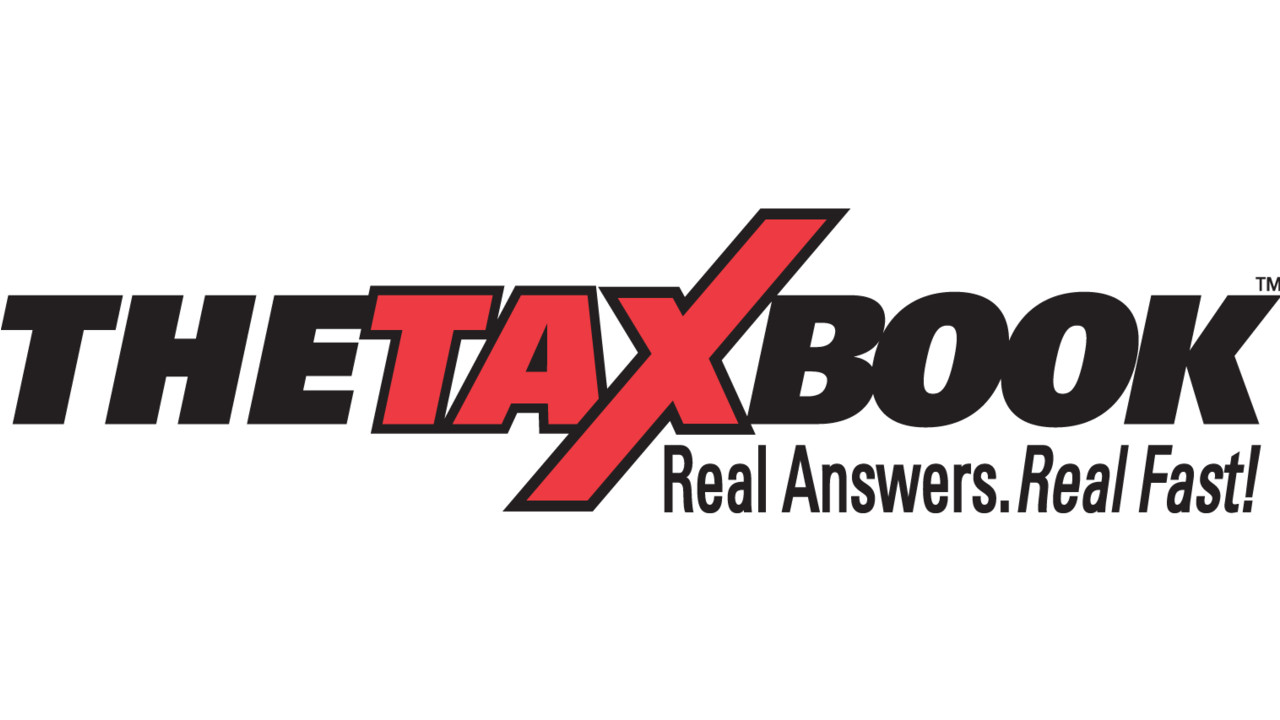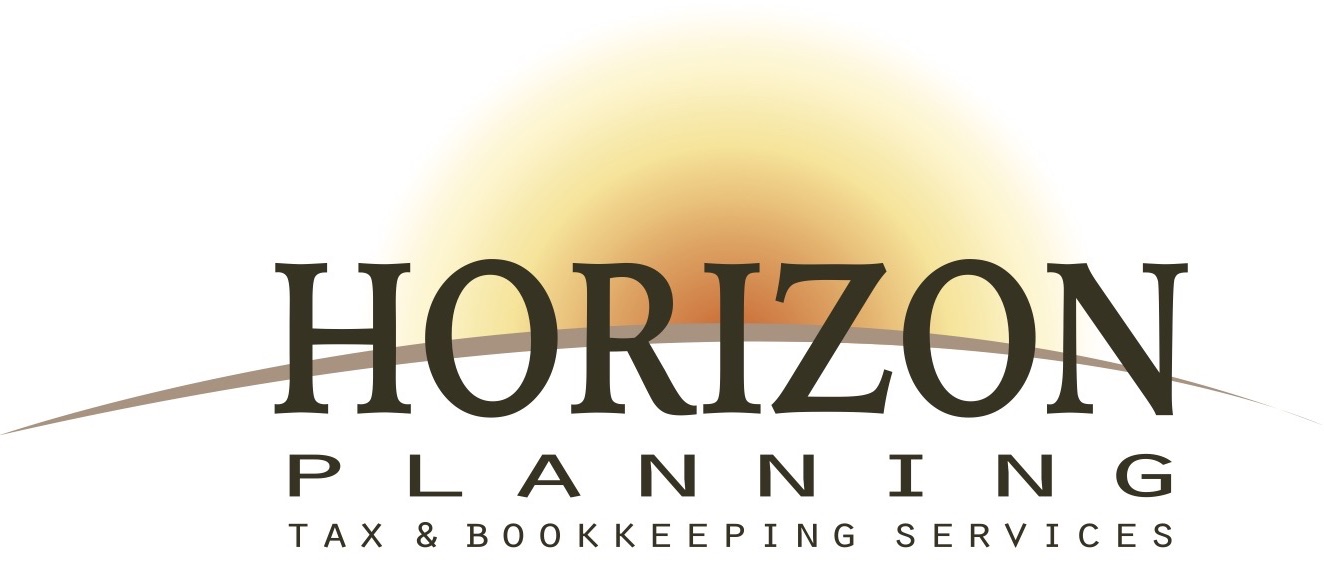|
In This Issue...
- From the President
- The 2019 Summer Symposium is This Week!
- June 2019 Chapter Events
- Welcome New CSTC Members
- Save the Date for the 2019 Fall Tax and Accounting Forum!
- News from the IRS
- Join CSTC
CSTC Member Benefits

CSTC members have access to benefits such as free payroll processing services for your tax practice, and the opportunity to earn new revenue through their flexible partnership options.

CSTC is pleased to include the VeriFyle ProTM premium secure online document and message sharing service at no cost to CSTC members!

Wolters Kluwer: Discounts on Tax, Accounting & Audit Resources, Software, Information & Services.

CSTC members receive the TaxBook WebLibrary at a special price
Other Member Benefits Include:
$ Savings on all Society Educational Events
$ Savings on Contact, Correspondence & Self Study Education
$ Savings with member specialty CSTC Connects (previouslyYellow Pages) list
$ Savings with E & O Insurance, plus specialty coverage relevant to your profession
$ Online CSTC Find-a-Tax Consultant search to help promote your business!
$ CSTC Member Listserv

Office Depot has partnered with us to provide exclusive savings in-store and online, plus fantastic additional benefits. This program is all about providing preferred pricing to our clubs, and the savings extend to almost every item.
Savings include 20% to 55% off item office supply core list, 20% to 55% off retail on cleaning & break room items, 10% off branded; 20% off private brand ink & toner core list, Average 10% off retail on 200 technology core items, Free next-day shipping on orders of $50 or more, and SIGNIFICANT savings on copy & print. Become a CSTC member to sign up for our Office Depot Small Business Savings Program, administered by Excelerate America.

We are a professional full-service tax advisory firm in San Diego. Our goal is to provide a level of service for our clients that will exceed expectations in every possible way. We strive to offer a diverse level of services in order to meet the needs of the diverse community we have been working in for more than 30 years.

TaxMama's® EA Exam Course prepares tax professionals to do so much more than just pass the IRS' Special Enrollment Examination. This is in-depth course teaches tax law from the ground up. It explains how tax returns work, with examples of basic 1040s, Schedule Cs, 1065s, 1120s, and 1120Ss; you learn tax law, tax research, client representation for audits, appeals and collections.

If you are interested in buying or selling a practice, contact us today! ATB is operated by Enrolled Agents ensuring a complete understanding of our profession. Please give us a call at (855) 428-2225 or visit us online at www.ATBCAL.com for more information and to view our current listings.
CA DRE 02002824
CSTC Mission
CSTC advances professionalism within the tax industry by:
- Providing quality education
- Creating networking opportunities
- Advocating professional standards
|
From the President

How Will You Measure Your Life?
In 2010, management scholar and innovation expert, Clayton Christensen, posed this question to the graduating class of Harvard Business School, then asked it in a Harvard Business Review article, and then wrote a book on the question. I pose this question to all of you, myself included – how will you measure your life?
Reading Christensen’s book was life-changing for me. It made me look honestly at my life to see if I was really living up to my values. We work hard all our life to make things better for our family, for our friends, and for ourselves, but I wonder if we look back enough to recognize just how much we’ve done to make life great. Appreciation for what we have seems to be one of the greatest attribute one could attain. It is pretty common for people to want to be something that they are not - taller or shorter or thinner or younger or more muscular or faster or more successful or a myriad of other things. We could spend our whole life wanting to be something that we are not, but that would be a waste of time. The happiest people seem to be those who look around and realize that what they’ve got is pretty good and appreciate it.
Measuring your life’s success is part of the process of looking around to see how you are doing. How is it that you measure your life? After all is said and done what is truly most important to you? What are your deepest goals and desires? When you look back, what will be your measure of personal success? What will you be most proud of? No doubt, many of us would put family, relationships with spouses and children, faith, values, positive impact in the community, etc., as their measures of success. Now the question is, how well do you allocate your personal resources to reflect those measures of success? Do you feel like you are spending the appropriate amount of time in the areas that are most important to you? Are you spending enough time building the relationships that you feel are so important?
When you analyze the success of a company, you don’t look at it in terms of its intentions, you look at it in terms of how it actually spends it’s time, money, and physical and human capital. Is it investing in new products, markets, technology or talent? Or is it just chugging along without much current investment in hopes of finding another organization to purchase?
Now what about you? As you look back on today, how did you spend your resources like time, energy, and money? Did your actions today align with your deepest goals and desires? If not, it’s never too late to make adjustments to move in the direction you really want to.
Deciding how you want your life to be measured may be the most important decision you ever make!
The profession you chose reflects your values. Tax professionals have the great opportunity to help individuals and families stay compliant with tax laws, organize their finances, take care of things they don’t want to take care of, suggest strategies to minimize taxes, and more often than not, serve their clients as a family advisor. I am constantly amazed at how much you do for your clients and how involved you are in their lives. Seeing, visiting with or talking with them every year is an opportunity to develop a wonderful relationship of trust and caring.
If you want your life measured in part by how you deal with and help others, you’ve chosen the right profession.
Your friend,
Gary Quackenbush, CSTC President
2019 Summer Symposium
June 9-12 2019
Westgate Las Vegas Resort & Casino

Registration is Open for the 2019 Summer Symposium!
Schedule-at-a-Glance
| |
Sunday, June 9, 2019
|
| 3pm |
Registration Opens; Exhibitor Set-up |
| 5:20pm-6pm |
Welcome Reception for First Time Attendees |
| 6pm-9pm |
Welcome Dinner
This event is family friendly.
(Included with full registration. Guest registration is $40) |
| |
Monday, June 10, 2019
|
| 6:30am-5pm |
Registration and Exhibits |
| 7:30am-9:00am |
Session 1: IRS Keynote Presentation and Breakfast
Scott Irick Deputy Director, Examination, Small Business/Self-Employed
|
| 9:15am-10:05am |
Breakout Sessions (all sessions will continue after the break): |
| |
Session 2: 199A - Qualified Business Income Deduction
Claudia Stanley, CPA, EA
|
| |
Session 3: 1031 Exchanges and Their New Counterpart - Opportunity Zones
Ruth Godfrey, EA |
| |
Session 4: Reporting K-1's for Tax
Jane Ryder, EA, CPA |
| |
Session 5: Toilets, Tenants & Trash: Capital Gains Tax Reduction Strategies
Frank Acuña, Attorney at Law |
| 10:05am-10:20am |
Break with Exhibitors |
| 10:20am-12:00pm |
Breakout Sessions (continued from before the break): |
| |
Session 2 Continued: 199A - Qualified Business Income Deduction
Claudia Stanley, CPA, EA
|
| |
Session 3 Continued: 1031 Exchanges and Their New Counterpart - Opportunity Zones
Ruth Godfrey, EA |
| |
Session 4 Continued: Reporting K-1's for Tax
Jane Ryder, EA, CPA |
| |
Session 5 Continued: Toilets, Tenants & Trash: Capital Gains Tax Reduction Strategies
Frank Acuña, Attorney at Law |
| 12:00pm-1:20pm |
Lunch on own |
| 1:20pm-3:00pm |
Breakout Sessions: |
| |
Session 6: California Old School Differences
Eugene Ostermiller, EA, NTPI Fellow |
| |
Session 7: Advanced Schedule C Audits
LG Brooks, EA, CTRS |
| |
Session 8: The Sharing Economy
Karen Joyner, EA |
| |
Session 9: How to Serve Immigrant Mixed-Status Families
Antonio Martinez, EA |
| 3:00pm-3:20pm |
Break with Exhibitors |
| 3:20pm-5:00pm |
Session 10: Cryptocurrency, the IRS, and You
John Miller, EA |
| |
Session 11: Marijuana Taxation in California
William Rogers, MBA, CFP, EA |
| |
Session 12: Dependency in Depth
Shannon Hall, EA |
| |
Session 13: Tax Issues for US Citizens Abroad
Monica Haven, EA, JD, LLM
|
| 5:00pm-6:00pm |
Reception with Exhibitors |
| 6:00pm |
Evening on Own |
| |
Tuesday, June 11, 2019
|
| 6:30am-5pm |
Registration and Exhibits |
| 7:30am-9:00am |
Session 14: California Keynote Presentation and Breakfast
Susan Maples, CPA, California Tax Payer Rights Advocate
|
| 9:00am-9:15am |
Break |
| 9:15am-10:05am |
Breakout Sessions (all sessions will continue after the break): |
| |
Session 15: Appealing Decisions - Audit, OIC, Tax Court, Bankruptcy Court, Federal District Court
Gary Quackenbush, Esq |
| |
Session 16: Everything S-Corp!
Jane Ryder, EA, CPA |
| |
Session 17: Baby, Oh Baby!
Karen Joyner, EA |
| |
Session 18: Engagement Letters
LG Brooks, EA, CTRS |
| 10:05am-10:20am |
Break with Exhibitors |
| 10:20am-12:00pm |
Breakout Sessions (continued from before the break): |
| |
Session 15 Continued: Appealing Decisions - Audit, OIC, Tax Court, Bankruptcy Court, Federal District Court
Gary Quackenbush, Esq |
| |
Session 16 Continued: Everything S-Corp!
Jane Ryder, EA, CPA |
| |
Session 17 Continued: Baby, Oh Baby!
Karen Joyner, EA |
| |
Session 18 Continued: Engagement Letters
LG Brooks, EA, CTRS |
| 12:00pm-1:20 pm |
Lunch on own |
| 1:20pm-3:00 pm |
Breakout Sessions: |
| |
Session 19: Passive Activity Loss Limitations
Eugene Ostermiller, EA, NTPI Fellow |
| |
Session 20: What's my Character?
Claudia Stanley, CPA, EA
|
| |
Session 21: Domestic Tax Issues for Non-Resident Aliens
Monica Haven, EA, JD, LLM
|
| |
Session 22: The Art and Science of Divorce Taxation in 2019
Armand D'Alo, EA, CFP, CDFA and Robbin D'Alo, EA, CLA, CDFA |
| 3:00pm-3:20pm |
Break with Exhibitors |
| 3:20pm-5:00pm |
Session 23: California: Do You see What I CA?
Shannon Hall, EA |
| |
Session 24: Correcting Depreciation - Form 3115 Line-by-Line
Karen Joyner, EA |
| |
Session 25: Residents/Non-Residents
Antonio Martinez, EA |
| |
Session 26: Choice Of Entity. LLC, INC, LP, GP, SP - How To Choose?
Gary Quackenbush, Esq |
| 5:30pm-6:30pm |
**BONUS IRS SESSION ADDED!**
Navigating the IRS and Managing the Aftermath of a Data Breach
Marc Zine, Senior Stakeholder Liaison and Katie Williams, Senior Stakeholder Liaison
|
| |
Wednesday, June 12, 2019
|
| 6:30am-5pm |
Registration and Exhibits |
| 7:30am-9:00am |
Session 27: Best Practices - Compliance and Documentation Presentation and Breakfast
Monica Haven, EA, JD, LLM
Class to continue after the break |
| 9:00am-9:15am |
Break |
| 9:15am-10:05am |
Session 27 Continued: Best Practices - Compliance and Documentation Presentation and Breakfast
Monica Haven, EA, JD, LLM
|
| 10:05am-10:20am |
Break with Exhibitors |
| 10:20am-12:00pm |
Breakout Sessions: |
| |
Session 28: Compensatory Stock & LLC Benefits (Options RSU's, ESPP, Etc)
Jane Ryder, EA, CPA |
| |
Session 29: Fresh Starts - Installment Agreement, OIC, Tax Lien Relief, Bankruptcy, Innocent Spouse, Injured Spouse
Gary Quackenbush, Esq |
| |
Session 30: How to Read a Trust
Frank Acuña, Attorney at Law |
| |
Session 31: Tax Penalties & Abatement
LG Brooks, EA, CTRS |
| 12:00pm-1:20pm |
Lunch on Own |
| 1:20pm-3:00pm |
Session 32: Stump the Tax Experts
|
| 3:00pm-3:20pm |
Break |
| 3:20pm-5:00pm |
Session 33: Ethics - What Would You Do?
Claudia Stanley, CPA, EA
|
| 5:15pm |
Grand Prize Drawing |
Registration Fees
| Category |
After May 1, 2019 |
| Members |
$575 |
| Staff of Members |
$600 |
| Non-Members |
$675 |
| Sunday Social Event Guest Tickets |
$40 |
Click here to visit the 2019 Summer Symposium page to learn about our topics, speakers, and more!




June 2019 Chapter Events
June 4, 2019
Topic: Comprehending LLC's - Setting-up, Preparing and Dissolving
East County San Diego Chapter Meeting
1 Federal Tax Law Hour
1 California Hour
Topic: We Care to Share - Advance
East County San Diego Chapter Meeting
1 Federal Tax Law Hour
June 5, 2019
Topic: Understanding 1031 Exchanges
Temecula Valley Chapter Meeting
2 Federal Tax Law Hours
Topic: The Power of Simplicity - Worker's Classifications
San Francisco Bay Chapter Seminar
2 Federal Tax Law Hours
June 6, 2019
Topic: Estate Planning Strategies
San Gabriel Valley Chapter Meeting
2 Federal Tax Law Hours
June 13, 2019
Topic: To 1099 or not to 1099: Worker Classification before the IRS and EDD
North County San Diego Chapter Meeting
1 Federal Tax Law Hour
1 California Hour
June 19, 2019
Topic: After Tax Season Breakfast
Temecula Valley Chapter Meeting
Hours TBA
Topic: The Tax Cuts & Jobs Act and Its Impact On Real Estate & Cost Segregation
Inland Empire Chapter Meeting
1 Federal Tax Law Hour
1 Federal Update Hour
Topic: Ethics & Update on the Department of Labor Fiduciary Rule
San Jose Chapter Meeting
2 Ethic Hours
Topic: TBA
Orange County Chapter Meeting
Hours TBA
June 20, 2019
Topic: Top Ten Misconceptions that Get Employers Sued
San Diego Chapter Meeting
2 California Hours
June 26, 2019
Topic: Boy is California Different
Greater Long Beach Chapter Meeting
5 California Hour
1 Federal Update Hour
May 28, 2019
Topic: Marijuana Taxation in California
Orange County - South Chapter Meeting
1 Federal Law Hour
1 California Hour
Click here to view the CSTC calendar.
Welcome New CSTC Members!
Please help us in joining our newest CSTC Members!
Joan Brashear
Inland Empire Chapter
Carolyn Caslin
Orange County Chapter
Lee Denis
Los Angeles Chapter
Leighanne Lafrenz Nickle
Inland Empire Chapter
Julie Morandi
Sacramento Chapter
Selina Young
San Jose Chapter

Save the Date for the 2019 Fall Tax and Accounting Forum in Sacramento!
The California Society of Tax Consultants (CSTC) provides quality tax education for tax professionals, including CTEC-registered preparers, Enrolled Agents, CPAs and attorneys. CSTC's 2019 Fall Forum will be held September 20-21, 2019 at the Courtyard by Marriott Sacramento Cal Expo in Sacramento, CA. It will focus on tax and accounting for non-profit organizations.
Schedule coming soon!

Join the California Society of Tax Consultants!
Click here to fill out an online application.
CSTC advances professionalism within the tax industry by:
- Providing quality education
- Creating networking opportunities
- Advocating professional standards
|